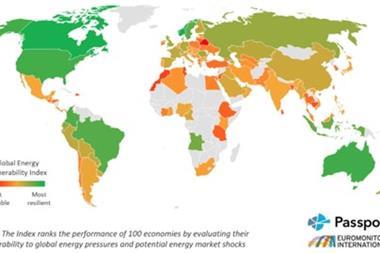Do organisations now recognise that recovery planning is an important aspect of risk management?
HEIMO WEISS: The last decade has seen contingency planning, or business continuity, become an established management practice. However, a level of understanding is not always translated into workable procedures, should a major incident occur.
While computer disaster recovery providers can raise the profile with IT resurrection stories, and business continuity planners create new excellence in the ultimate plan, the more common reality of a fire, flood or physically disruptive incident is often overlooked.
Very few companies, when creating continuity plans, actually involve suppliers of restoration services to the extent they should. However, the successful implementation of any recovery plan will hinge upon a coordinated approach. Loss adjusters have long accepted this, but the infrequency with which we meet the response of 'what a good idea' - when we suggest to an organisation that they would benefit from pre-registering with a restoration company - illustrates an educational void.
Experience shows, especially in cases of major disasters, that pre-registered customers have benefited significantly from the services offered by a restoration company. There are two major reasons. First, the customer is aware of a well-proven procedure for notifying the company to ensure immediate response and receive fast support, and second it receives priority treatment during an area-wide event.
What are the main things the business community should recognise and address?
HEIMO WEISS: In order to recover from critical situations companies need to be aware of the opportunities, procedures and dynamics of real recoveries.
Although a high proportion of disasters cause partial damage, most plans effectively address only a total loss situation. For example, they will look at recovering a business at an alternative site rather than recovering the existing facilities.
Disasters cause interruption to business processes which then cause financial disruption to the business. To run processes in any business, but especially in manufacturing and distribution, requires assets. Therefore, to recover a business one needs to establish which processes are critical to continuity and what assets will need priority recovery.
Do you think that companies underestimate the importance of reacting quickly after damage?
HEIMO WEISS: Time is money. Reacting faster reduces disruption to your business. In many instances restoration may be the only route forward, especially where equipment is unique, customised, on long lead times, or just under-insured. It therefore should become an integral part of the recovery strategy and not just an add-on in the event something happens.
Many plans overlook the fact that recovering the assets, and therefore the working environment, will effectively recover the operating capability.
Increasingly one has to look at supply chain resilience for clients and recovery from interruptions, rather than just plans for total disaster.
How quickly can equipment be recovered?
HEIMO WEISS: A company which is committed to providing a rapid response can generally recover equipment within a period of days. Time frames for recovery are typically 25% faster than if new equipment has to be procured and commissioned.
Will the functionality of equipment be impaired, or could performance specifications be compromised following professional recovery?
HEIMO WEISS: No. If it is considered that an item of equipment cannot be restored to full 'pre-incident' condition, the recovery specialist will recommend that it is replaced. Professional recovery specialists will only recommend recovery in situations where detailed technical assessments, carried out by engineers, have verified that the equipment can be returned to full pre-incident condition, in terms of full functionality, reliability and life span.
Does work carried out by professional recovery specialists conform to any recognised standards?
HEIMO WEISS: Normally international standards for levels of component cleanliness, such as the Joint Industry Standard ANSI/J-STD-001B, are used. It is also advisable to choose a recovery specialist that ensures its processes meet the expected levels of quality, through ISO certification or other reliable measures.
Why do decisions regarding recovery have to be made with a high degree of urgency?
HEIMO WEISS: Obviously, if assets are to be recovered, it is vital to obtain the information on their post-disaster condition as soon as possible.
Following most contamination, the condition of equipment rapidly deteriorates, usually due to corrosion, to a degree that may result in professional recovery becoming uneconomically viable. Organisations that cannot decide whether to replace or proceed with recovery within 24 hours should take measures to stabilise the condition of the equipment to minimise on-going deterioration.
How does this kind of recovery plan work in practice?
HEIMO WEISS: Where the client has pre-selected an adjuster and a restoration company, an 'all party' meeting will take place to discuss the likely series of events and mutual support and cooperation. Following a loss, the customer automatically calls the restoration company and informs its insurer and/or adjuster. On arriving at the site, the restoration company limits its activity solely to loss mitigation - stabilising the situation and preventing further losses wherever possible. At the same time, it starts to assess damage to equipment and assets, obviously commencing with those that are most critical to the processes (pre-defined in the now revised continuity plan!) creating the speediest recovery.
This means that accurate information is compiled to allow the customer and adjuster to assess the situation, while time is being 'bought' by ensuring the assets do not deteriorate further so as to prevent recovery at a later date. Restoration will proceed if this is deemed the most viable, cost effective or expedient option.
Working effectively together with the other parties involved in a recovery allows the customer to benefit from the most timely and mitigated recovery both in terms of financial considerations and sustainability of market share.



















